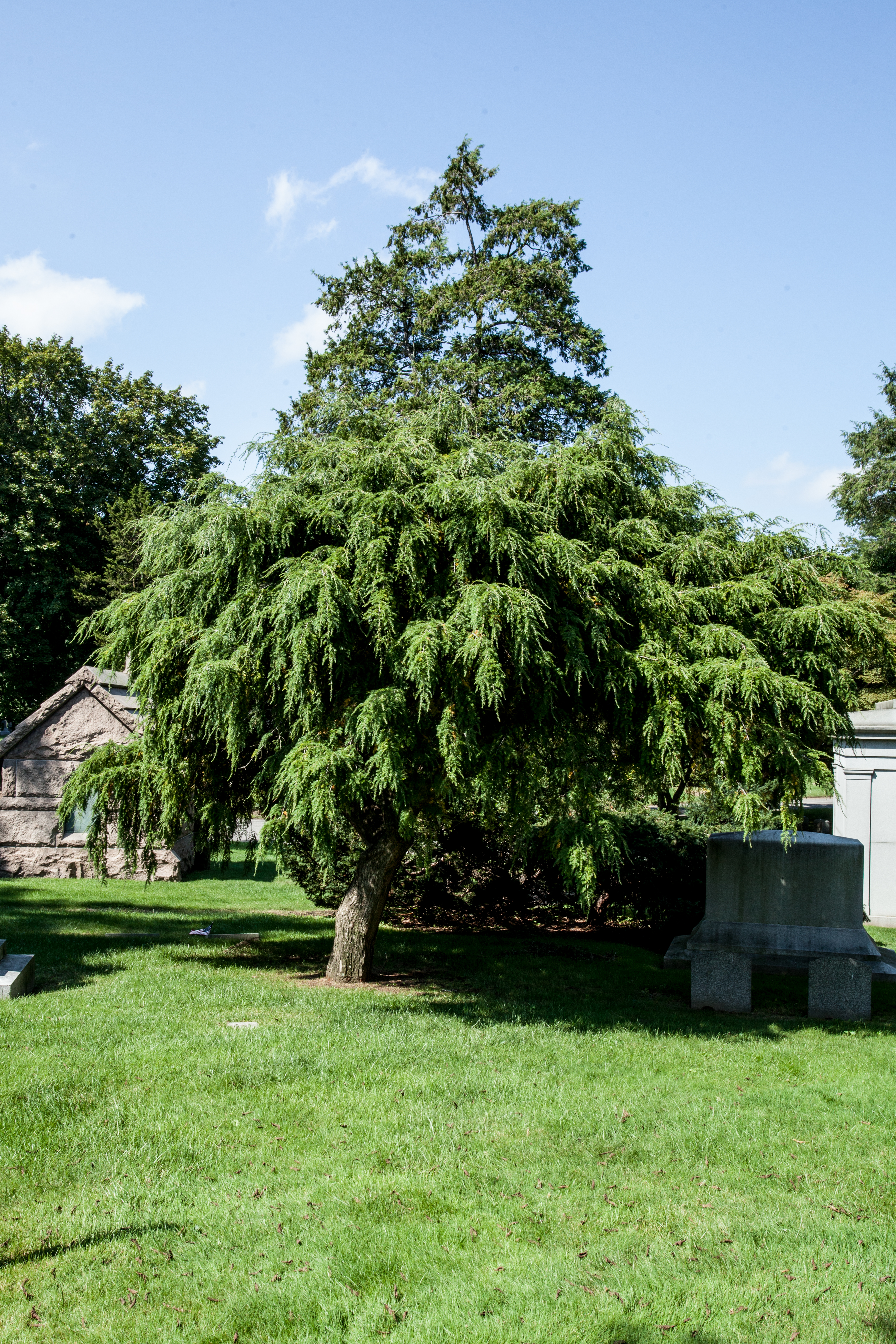TSUGA CANADENSIS ‘PENDULA’ – HEMLOCK, EASTERN ‘PENDULA’

Hemlock transplants well balled-in-burlap due to a branched root system and will grow in moderately dry or moist, acidic soil but prefers moist, well-drained sites. Trees are often found in shaded ravines in their native habitat growing where roots have ready access to moisture. However, root rot and bark splitting are common on sites which are constantly wet. Some die-back can be expected after transplanting if irrigation is not managed just right. Many people have success locating the plants on a slight mound several inches above surrounding soil to help roots become established. Be especially careful not to plant trees any deeper than they were at the nursery. The top-most root in the root ball should be within an inch or two of the soil surface.
Despite its like for shaded landscapes, plants grow well in full sun in the middle and northern part of their range provided there is plenty of open soil for root expansion. This is not a tree to plant in a lawn in competition with turf unless a large area of mulch is maintained around the tree. Nitrogen fertilizer applications should be kept to a minimum to help keep insect attacks from woolly adelgid in check; these insects kill trees. This is the state tree of Pennsylvania. National champion is 165 x 38 feet in Tennessee.
Plants grown in full shade will be thin and will not produce the screening effect so characteristic of Hemlock in full sun or partial shade. This is a picky plant but well worth the extra effort to cultivate it. Canadian Hemlock is tolerant of shearing and can be used for large or small, sheared screens. Unfortunately, infestations of woolly adelgid have been severe in New England and in the mid-Atlantic states and this may limit their use in these areas.

